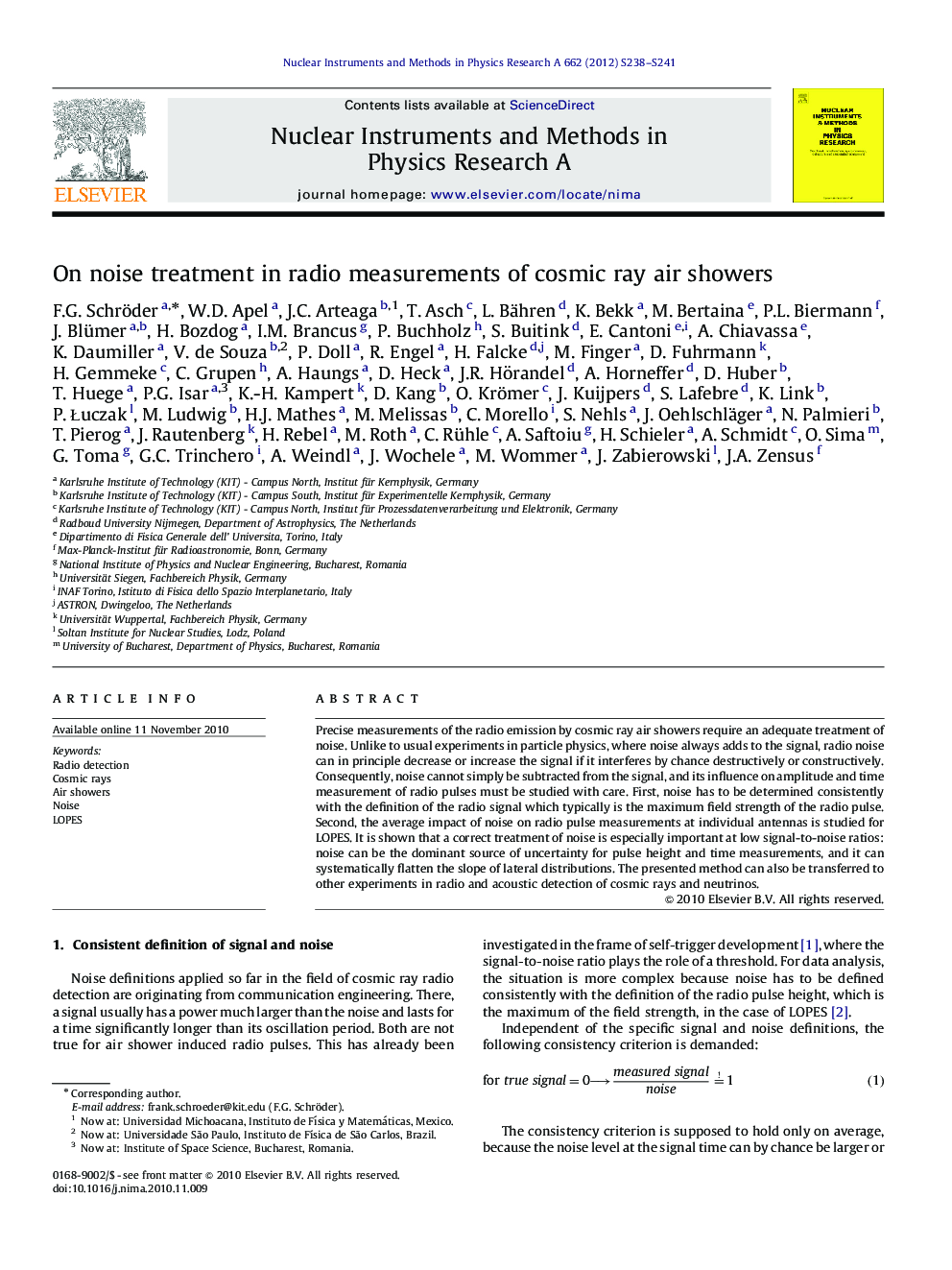| Article ID | Journal | Published Year | Pages | File Type |
|---|---|---|---|---|
| 1823961 | Nuclear Instruments and Methods in Physics Research Section A: Accelerators, Spectrometers, Detectors and Associated Equipment | 2012 | 4 Pages |
Precise measurements of the radio emission by cosmic ray air showers require an adequate treatment of noise. Unlike to usual experiments in particle physics, where noise always adds to the signal, radio noise can in principle decrease or increase the signal if it interferes by chance destructively or constructively. Consequently, noise cannot simply be subtracted from the signal, and its influence on amplitude and time measurement of radio pulses must be studied with care. First, noise has to be determined consistently with the definition of the radio signal which typically is the maximum field strength of the radio pulse. Second, the average impact of noise on radio pulse measurements at individual antennas is studied for LOPES. It is shown that a correct treatment of noise is especially important at low signal-to-noise ratios: noise can be the dominant source of uncertainty for pulse height and time measurements, and it can systematically flatten the slope of lateral distributions. The presented method can also be transferred to other experiments in radio and acoustic detection of cosmic rays and neutrinos.
